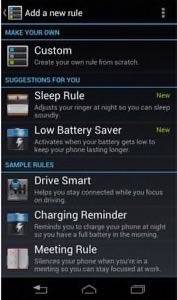
Apple is expected to announce the newest iteration of the iPhone on Wednesday. It will likely – and finally – have a bigger screen along with 4G LTE, better central and graphics processors, and Apple’s vaunted Retina display. The problem for Apple? Manufacturers like Motorola are beating it to the punch.
Last week, Google-owned Motorola unveiled three new smartphones for the holiday season. Two, the Droid Razr HD and the Razr Maxx HD, target the very top of the market. Do not expect these units to set the mobile market on storm.
Motorola’s third device, the Droid Razr M, is a different story.
The M is designed to hit the top of the mid-level smartphone market. It may not match the hardware specs as top-of-the-market devices like the Samsung Galaxy S III or (presumably) the new iPhone, but it still packs a good wallop. The M has a dual-core 1.5GHz processor, 2000mAh battery (better than the 1800mAh of the well-reviewed HTC One X), 4G LTE on Verizon, and a 4.3-inch (540×960) Super Amoled Advanced screen. Priced at $99 after a $50 mail-in rebate, the M is primed to sell.
The specs only tell part of the story, though, and this is where it gets interesting vis à vis the competition, especially the iPhone update.
The Droid M is not a big smartphone despite the 4.3-inch screen size. Motorola took the 4.3-inch screen from the Droid Razr and fit a compact phone around it; the screen stretches nearly edge-to-edge with a marginal bezel. While the large, flat Droid Razr may seem a little awkward, the M delivers a large-screen experience in a compact device. It provides a long, but not wide, screen on a device that fits nicely in the palm of your hand.
The new iteration of Apple’s flagship device is said to have a longer, but not wider, screen, coming in at 4-inches. That would be an increase from the previous five versions of the iPhone, which had 3.5-inch screens and set the early standard for touchscreen smartphones.

The Droid M also enjoys most of the latest developments of the Android operating system. The M is being released with Android 4.0.4 Ice Cream Sandwich (with an update to 4.1 Jelly Bean by the end of the year) and, for the most part, avoids the extra “skin” that manufacturers like HTC and Samsung add to differentiate their devices. Say what you want about Android versus Apple’s iOS, but the two latest versions of Google’s mobile operating system made Android more responsive, easier to use, and feature-rich. They closed the gap between Android and iOS.
The Droid M reveals a bit of Android’s future as well. “Smart actions” automate many tasks that were once governed by third-party apps. For instance, the M knows when you are sleeping and adjusts your notification sounds, turns on a battery-saver mode when power is low, and changes ringtone volume and screen saver depending on whether you’re at home or work. Smart actions is a clever bit of software and one of the first touches of Google’s software engineering on a Motorola device.
The bottom line is this: Motorola just came out with a mid-level device that, from a feature-by-feature comparison, ably competes with both the iPhone 4S and the next-gen iPhone at a price that will attract many smartphone buyers. One smartphone aficionado asked after seeing the Droid M, “Did Motorola just release the iPhone 5 before Apple did?” Maybe close enough.

















